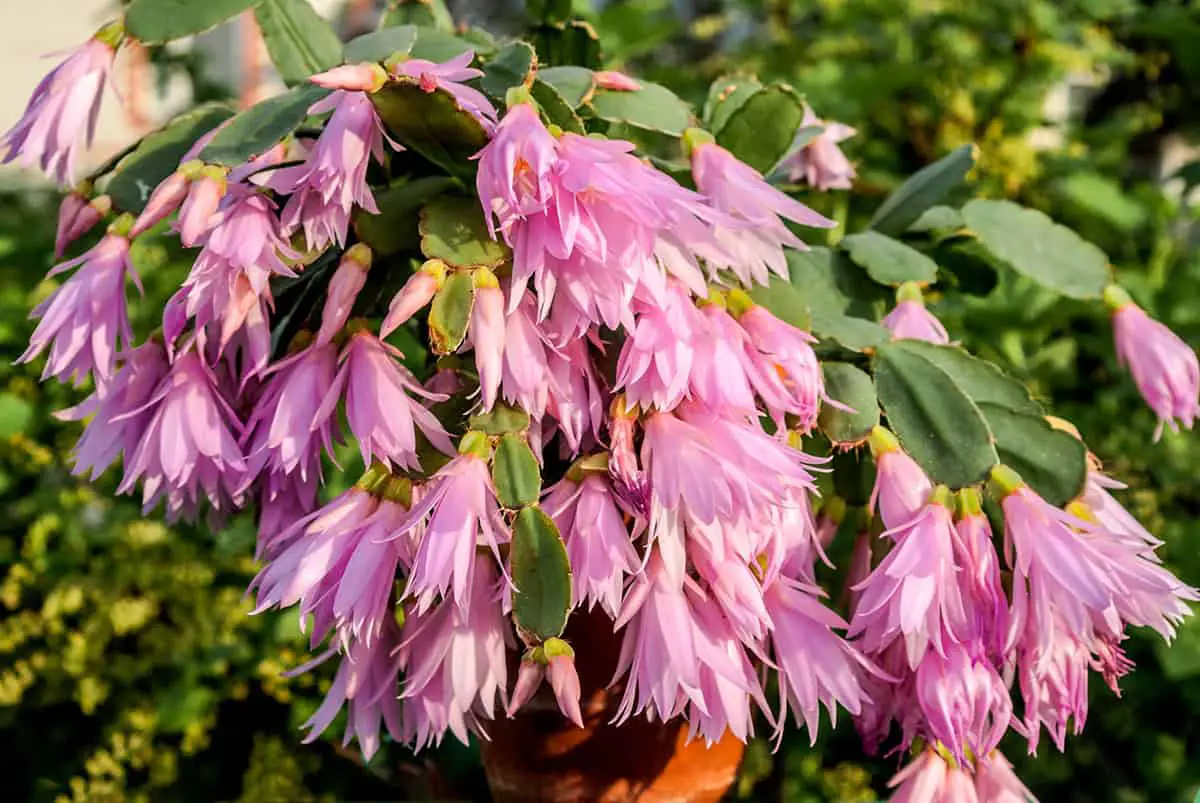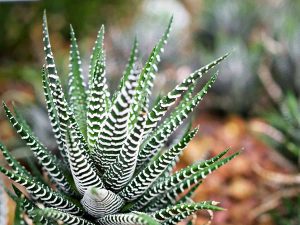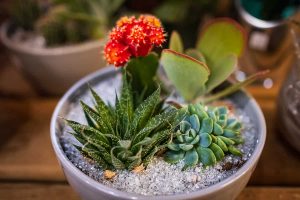You notice your Easter Cactus looking a bit wilted and wonder if it needs water. Getting the watering right for this plant can be tricky but is essential for its health. Here’s how to water your Easter Cactus properly to keep it thriving.
Table of Contents
Best Time to Water
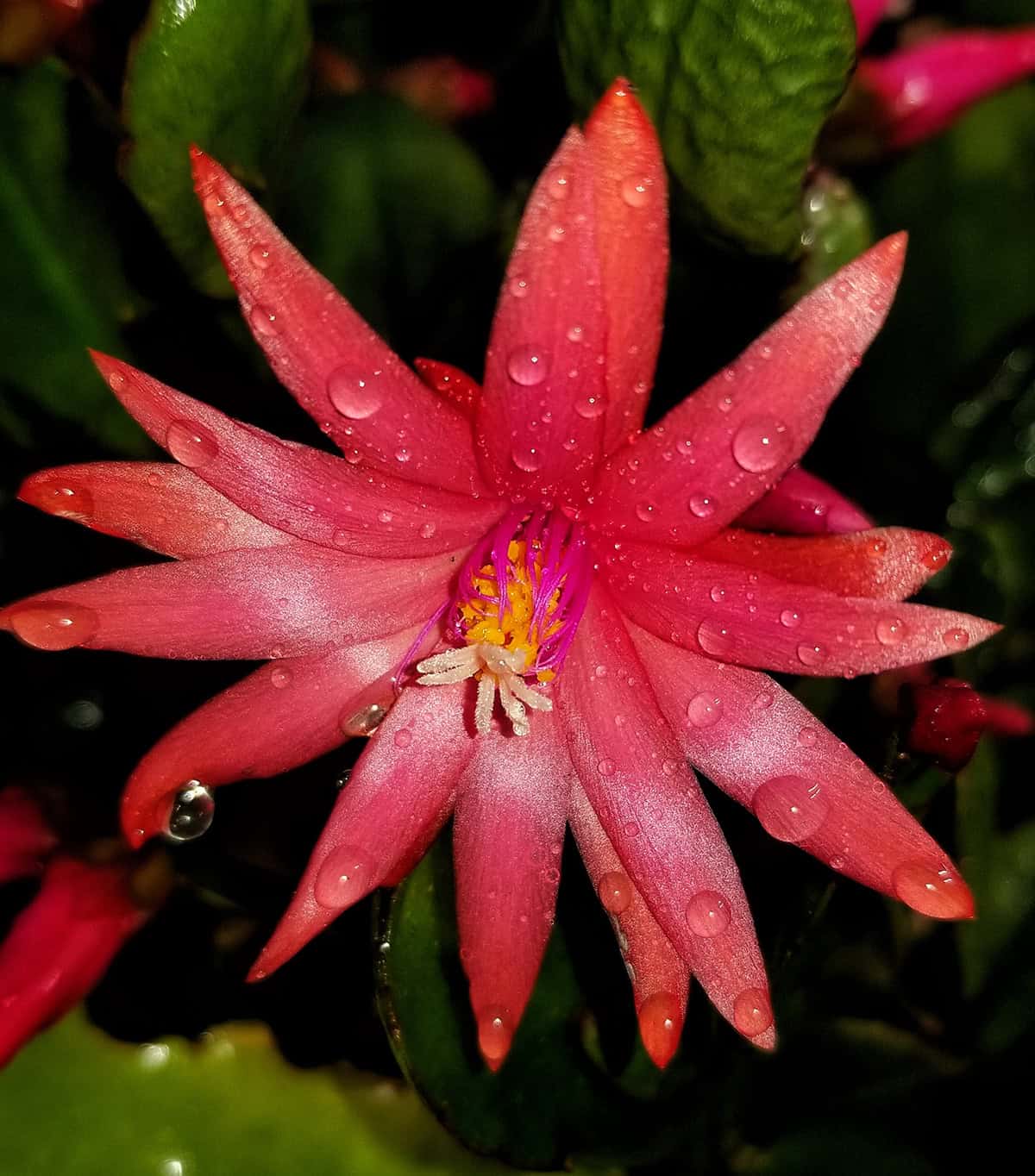
Your Easter cactus has unique watering needs, so it’s essential to learn how and when to water this plant. To ensure healthy growth, water from the top down, wetting the potting soil thoroughly.
To determine the right time to water your cactus, you should check the soil’s moisture level. Allow the top inch of soil to dry out before watering again. Overwatering can lead to root rot, so striking a balance is crucial.
It’s also essential to monitor the temperature around your plant. Easter cacti thrive in cool to moderate temperatures, ideally between 60-70°F (15-24°C). Sudden temperature fluctuations can stress your cactus, affecting its watering needs and overall health.
In general, the morning is a good time to water your Easter cactus. Morning watering can help the plant to stay hydrated throughout the day and prevent the soil from drying out too quickly during warm periods. Remember to always drain excess water from the bottom of the container to avoid waterlogged soil, which can lead to root rot.
Watering Frequency
When it comes to your Easter cactus, choosing the right watering frequency is essential for a healthy plant. You should water your cactus when the top inch of soil is dry to avoid overwatering. This method will ensure the plant receives adequate moisture without becoming waterlogged.
To determine soil dryness, simply press your finger lightly into the soil. If it feels dry, it’s time to water your Easter cactus. Remember, though, that the ideal temperature for your Easter cactus is between 60-70°F (15-24°C), so you should adjust your watering frequency accordingly.
Keeping the temperature stable and avoiding sudden fluctuations is crucial to prevent stress on the plant. Moreover, the watering method also matters. Make sure to water your Easter cactus from the top down, soaking the soil completely. This watering technique ensures proper distribution of moisture while preventing waterlogged conditions.
Ideal Water Conditions
Water Quality
To ensure the health of your Easter cactus, it’s crucial to use clean, high-quality water. Tap water can sometimes contain minerals or chemicals that may harm your plant. Instead, opt for distilled or filtered water for optimal results. Watering your Easter cactus from the top down, and wetting the potting soil thoroughly, will ensure that the plant’s roots are well-hydrated.
Water Temperature
In addition to water quality, the temperature of the water plays a vital role in the care of your Easter cactus. Make sure the water is at a cool to moderate temperature, ideally between 60-70°F (15-24°C). To avoid shocking the plant, maintain consistent water temperatures when watering, as sudden fluctuations can cause stress.
Remember to let the top inch of soil dry out before giving your Easter cactus more water. Striking a balance between watering is essential to prevent root rot and ensure the proper growth and overall health of your plant.
Step-by-Step Watering Process
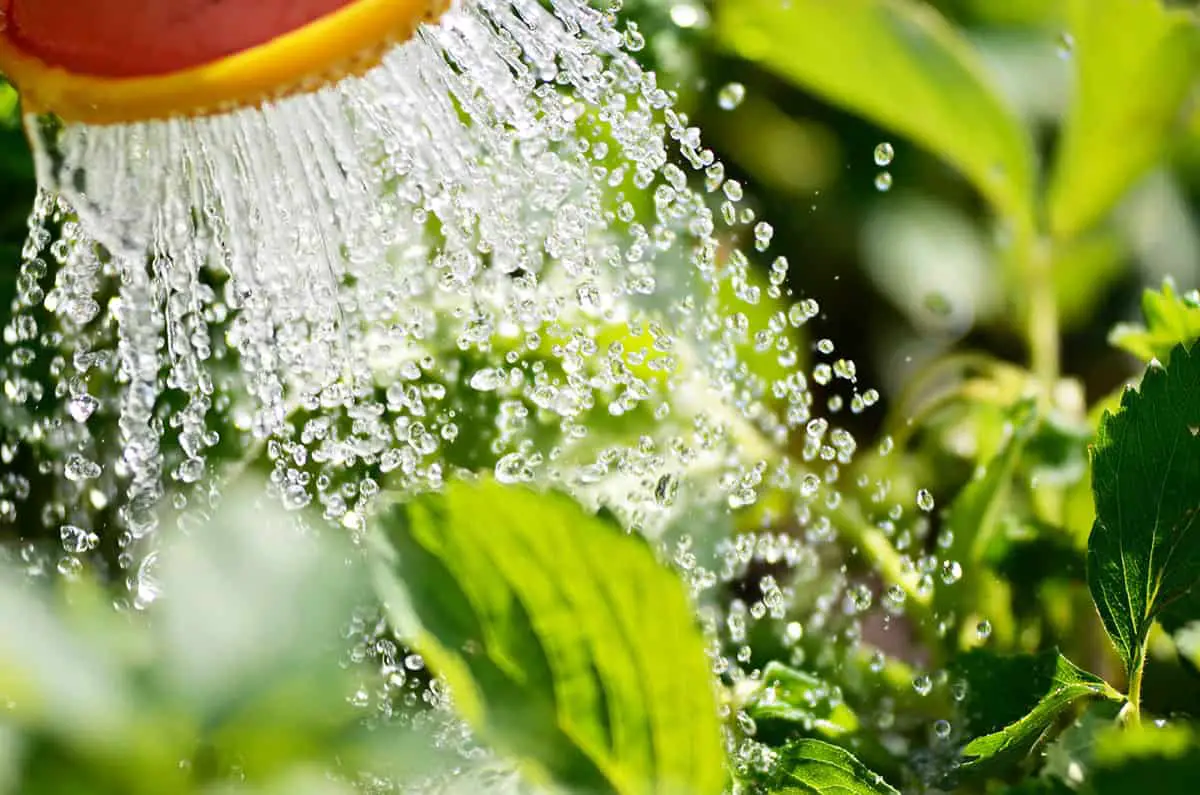
To keep your Easter cactus healthy, it’s essential to water it correctly. In this section, we will guide you through the step-by-step process of watering your Easter cactus.
First, it’s crucial to wait for the right time to water your plant. The Easter cactus prefers its soil to be slightly dry but not completely. Check the soil using your finger or a moisture meter to ensure it’s not too wet or too dry.
When the soil is ready, use a watering can with a narrow spout to water from the top down. This method helps in wetting the potting soil thoroughly without causing root rot. Be careful not to overwater, as this can lead to root and stem problems.
Easter cacti benefit from long periods of dark and cold for their flowers to form. Place your plant in a room with temperatures around 60-65 degrees Fahrenheit, getting at least 12 hours of darkness.
During the growing season (spring and summer), feed your Easter cactus with a balanced, slow-release fertilizer. Reduce or cease fertilization during fall and winter when the plant is dormant. This approach will ensure your cactus receives the right nutrients for optimal growth.
Common Watering Mistakes and How to Avoid Them
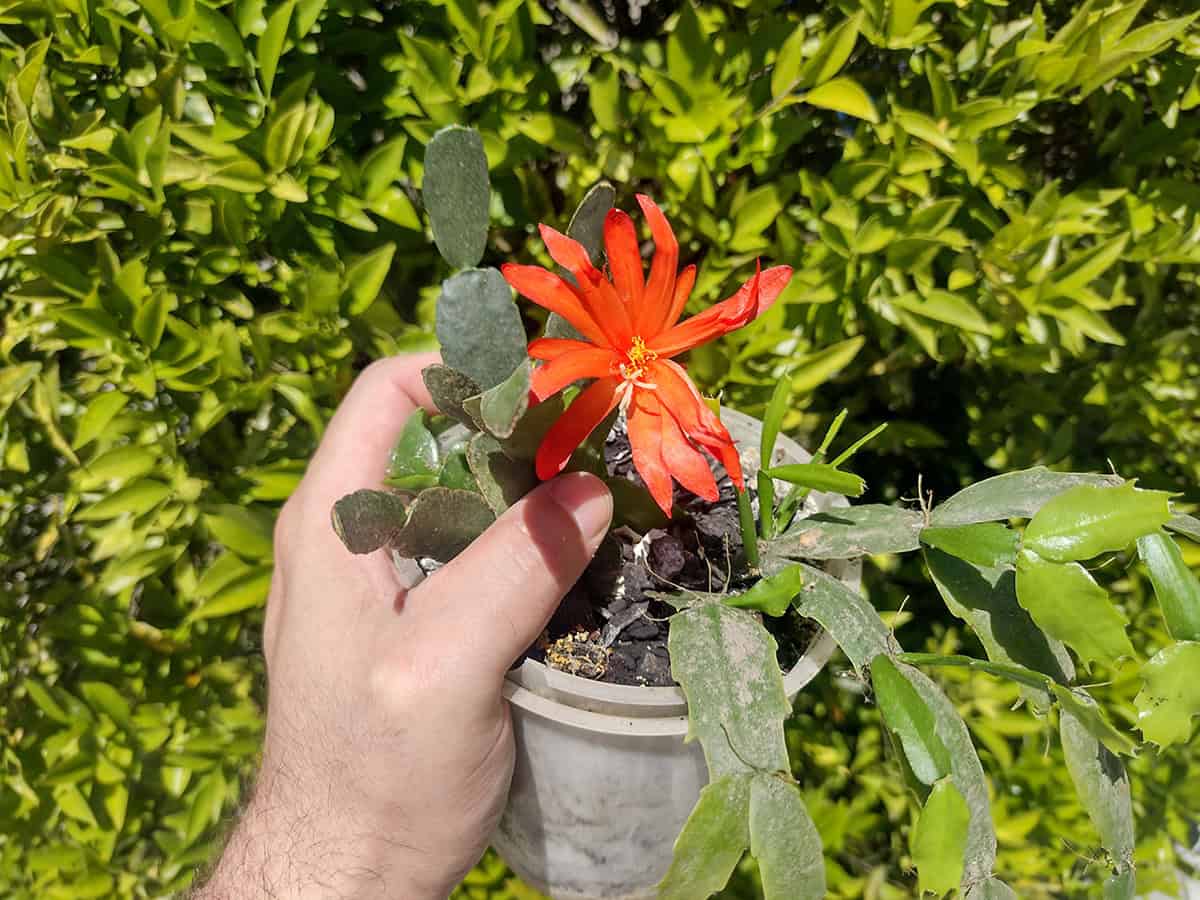
An essential aspect of caring for your Easter cactus is proper watering. Not paying attention to the plant’s needs may lead to common mistakes. Knowing these errors can save your cactus from wilting.
One typical mistake is overwatering. Your Easter cactus needs well-drained soil to stay healthy. Giving it too much water can cause root rot. To avoid this issue, monitor the soil moisture and water only when it’s dry to the touch.
Another mistake is watering the leaves, not the soil. To ensure the plant absorbs water efficiently, always water the soil directly. Avoid splashing water on the leaves, as this might cause them to rot.
Using water that’s too cold or too hot is another problem. Your Easter cactus prefers room-temperature water. Keep a container of tap water at room temperature to use for your plant. This allows harmful chemicals like chlorine to evaporate, protecting the plant.
Lastly, you must ensure your cactus is in well-draining soil and a pot with drainage holes. This helps excess water escape, avoiding waterlogged soil.
Signs of Overwatering and Underwatering
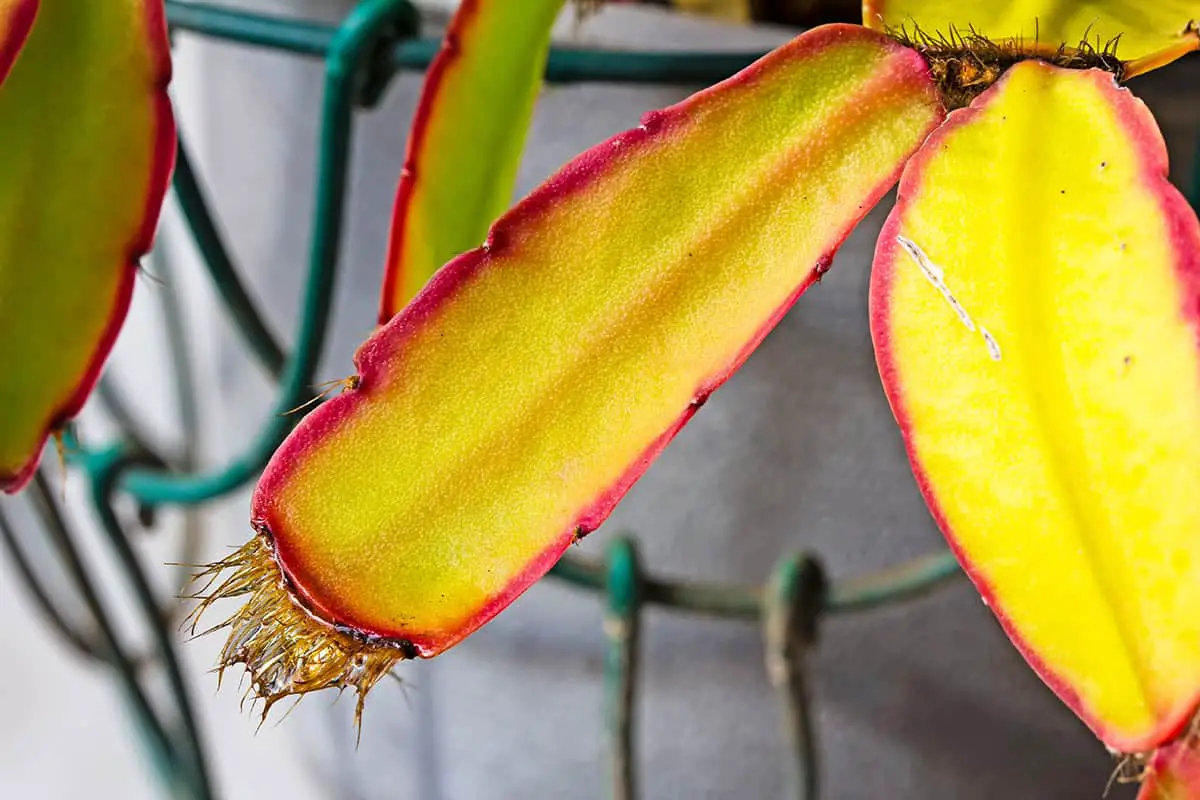
Easter cacti are popular holiday plants that need proper watering to thrive. To keep your plant healthy, it’s essential to recognize the signs of overwatering and underwatering. In this section, we’ll discuss the symptoms of both watering issues.
Symptoms of Overwatering
Overwatering your Easter cactus can lead to root rot and damage to the plant. If you notice the following symptoms, it’s likely that you’re overwatering your plant:
- Yellowing leaves: If the leaves are turning yellow and becoming soft, it’s a sign of excessive water.
- Mushy stem segments: Overwatered Easter cacti will have stem segments that are mushy and tender. This Penn State Extension article confirms that too much water is often the culprit.
- Constantly damp soil: The soil should not be consistently moist; it should be slightly dry between watering sessions.
- Wilting young shoots: Despite having enough water, overwatered plants may still have wilted young shoots.
Symptoms of Underwatering
Similar to overwatering, underwatering can cause harm to your Easter cactus. Pay attention to these signs to ensure proper watering:
- Dry soil: If the soil feels completely dry when you touch it, your plant needs more water. The University of Georgia Extension suggests watering when the soil is dry to the touch.
- Shriveled leaves: Underwatered cacti may display leaves that appear shriveled or wrinkled.
- Dropping unopened buds: If your cactus is dropping its unopened buds, it might be a result of underwatering.
Seasonal Watering Adjustments
Your Easter Cactus needs different watering schedules during different seasons. In the growing period, which occurs from spring to fall, you should water the plant frequently. Allow the top inch of soil to dry out before watering. Overwatering can lead to root rot, so make sure to strike a balance.
During the fall and winter months, reduce watering frequency to every few weeks. Let the soil become drier than usual. This change in watering encourages the formation of flowers as holiday cacti are short-day plants. This means they begin blooming as nights get longer. To stimulate blooming, ensure the plant experiences at least 12 hours of continuous darkness for 5-6 weeks.
When watering, always wet the potting soil thoroughly, allowing the excess water to drain freely from the bottom of the container. Avoid letting the Easter Cactus sit in standing water, as prolonged exposure to overly wet soil, especially in winter, may lead to root rot.
